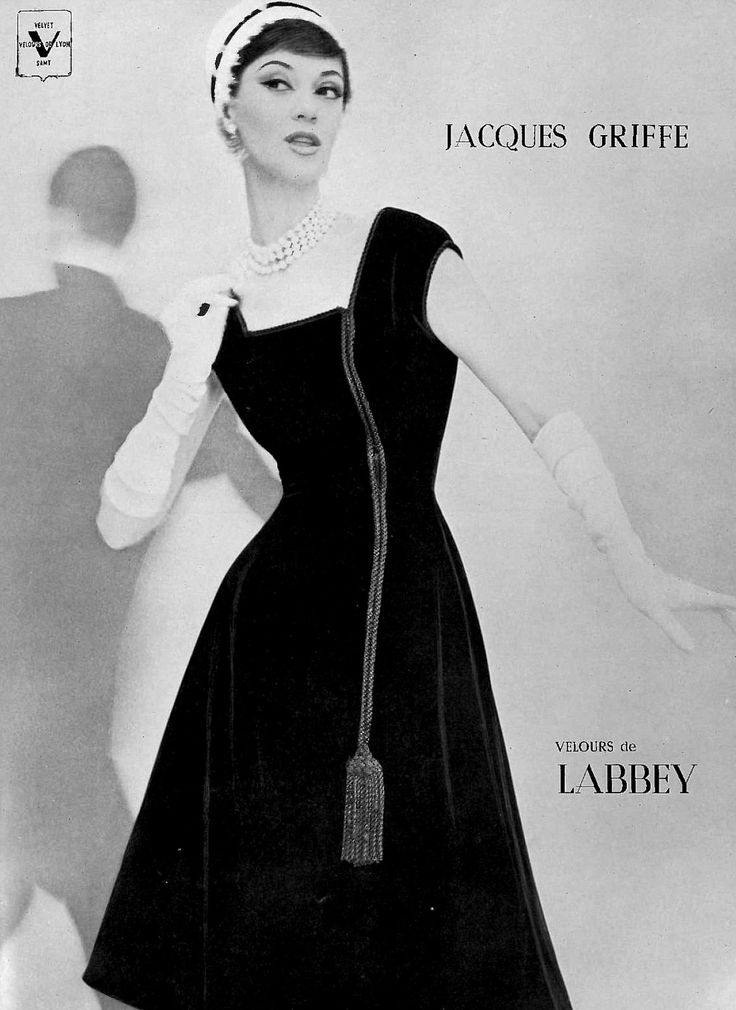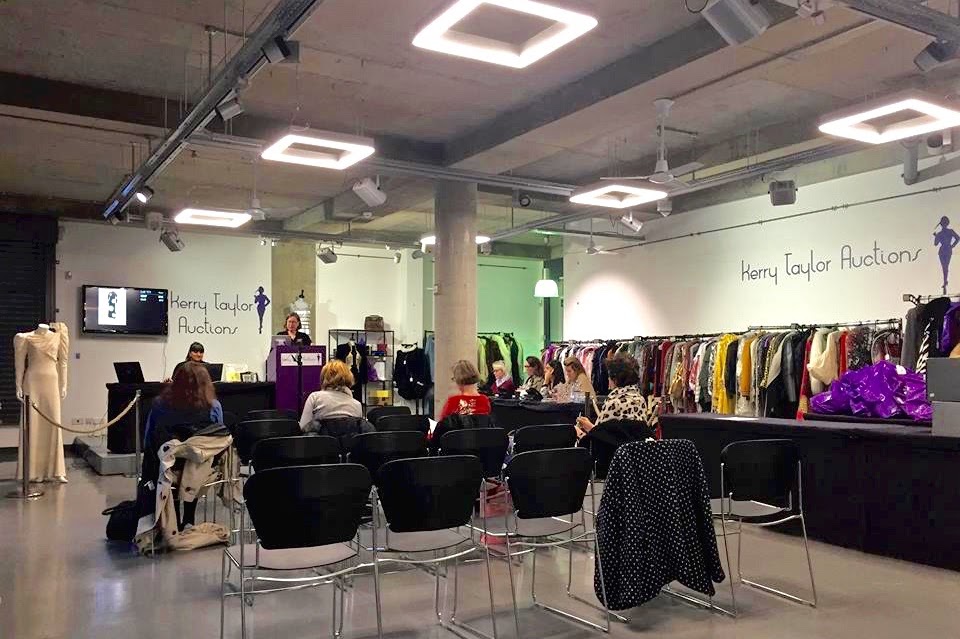When I look at early 1950s fashion photography I notice a couple of things very clearly. Most obvious are the black and white tonality, the highly stylised set-up and the immediately distinguishable dress silhouette. But one additional aspect also rarely escapes my attention -- the refined and mannequin-like poses of the models photographed. A perfect example is visible in the photograph above by Irving Penn. The models do not interact; each is in her own world yet simultaneously fully aware of the photographer, holding her previously-planned pose for a few seconds longer. Look at the model in the centre, turned in profile towards the viewer. How could her intention be anything other than to look as noble and elegant as possible? It is the structured poses of the models, combined with the often restrictive clothing, that gave fashion photography of the early 50s an unattainable, idealistic feel, which served to showcase the perfectionist craftsmanship of haute couture.
Above: Irving Penn, "The Twelve Beauties" (twelve most photographed models), 1947.
Above: Irving Penn, "The Twelve Beauties" (twelve most photographed models), 1947.
http://www.theenglishgroup.co.uk/blog/2012/08/16/the-twelve-beauties/
Yet as the decade progressed and fashion photography increasingly moved to the streets, the feeling of idealised form and the demand for wearable clothing resulted in a practical elegance that every woman believed she could attain 24 hours a day.
Still, we all know that one cannot do the dishes in high heeled shoes. And so the 1950s have become a decade characterised by female glamour, a decade so glamorous that it exceeded the boundaries of Hollywood and filtered even into the lives of average housewives. Only a closer look at candid photography reveals that in reality aesthetic perfectionism was rarely attained and, to our relief, most ladies did not clean their houses in petticoats and pearl necklaces.
Much like today's Instagram, it was fashion magazines and Hollywood film-still photography that propelled these ideas of structure and defined form and mid-century model poses were their perfect compliment, playing a vital part in the creation of the stereotypical 1950s' look. One of the reasons for this blog post is that model poses of this kind are a phenomenon rarely visible today, reserved for the occasional editorial shoot, advertisement on the pages of Vogue or haute couture runways featuring designs by John Galliano. When one does occasionally catch a glimpse of these subtle bodily contortions, it is evident that in order to look convincing they must be performed by truly talented ladies.
Both in the past and today these women embody what it really means to be a model -- to have a presence and know one's body and it's interaction with light in a way greater than in the portrait photography that fills the pages of family albums. Their images are not hidden away on a bookshelf and dusted off only on the rare occasion when one decides to create a genealogical tree. They hang on the walls of enormous apartments, are for sale as framed posters, can be seen pinned to the walls of art student's dormitories and become part of museum exhibitions.
Long necks, pointed toes, strategically placed arms and delicate fingers which caress the chin or lips just so. Mid-century model poses form part of the extensive legacy of fashion photography and while perhaps no longer the status quo, they are often referenced by the best names in the business -- a practice which is the ultimate testament to their beauty and otherworldly nature. Calling to mind ancient Greek sculpture, mid-century model poses heighten the connection between fashion and art, serving to showcase the exquisite tailoring of the garments they compliment.
Still, we all know that one cannot do the dishes in high heeled shoes. And so the 1950s have become a decade characterised by female glamour, a decade so glamorous that it exceeded the boundaries of Hollywood and filtered even into the lives of average housewives. Only a closer look at candid photography reveals that in reality aesthetic perfectionism was rarely attained and, to our relief, most ladies did not clean their houses in petticoats and pearl necklaces.
Much like today's Instagram, it was fashion magazines and Hollywood film-still photography that propelled these ideas of structure and defined form and mid-century model poses were their perfect compliment, playing a vital part in the creation of the stereotypical 1950s' look. One of the reasons for this blog post is that model poses of this kind are a phenomenon rarely visible today, reserved for the occasional editorial shoot, advertisement on the pages of Vogue or haute couture runways featuring designs by John Galliano. When one does occasionally catch a glimpse of these subtle bodily contortions, it is evident that in order to look convincing they must be performed by truly talented ladies.
Both in the past and today these women embody what it really means to be a model -- to have a presence and know one's body and it's interaction with light in a way greater than in the portrait photography that fills the pages of family albums. Their images are not hidden away on a bookshelf and dusted off only on the rare occasion when one decides to create a genealogical tree. They hang on the walls of enormous apartments, are for sale as framed posters, can be seen pinned to the walls of art student's dormitories and become part of museum exhibitions.
Long necks, pointed toes, strategically placed arms and delicate fingers which caress the chin or lips just so. Mid-century model poses form part of the extensive legacy of fashion photography and while perhaps no longer the status quo, they are often referenced by the best names in the business -- a practice which is the ultimate testament to their beauty and otherworldly nature. Calling to mind ancient Greek sculpture, mid-century model poses heighten the connection between fashion and art, serving to showcase the exquisite tailoring of the garments they compliment.

Irving Penn, Lisa Fonssagrives in Vogue, November 1949.
https://cdn.cliqueinc.com/posts/img/uploads/current/images/0/228/172/main.original.640x0c.jpg
Lillian Bassman, "Flat Hat, Bare Back" (model Barbara Mullen), New York, 1958.
https://s-media-cache-ak0.pinimg.com/originals/86/0e/0c/860e0c641d33adf0223a67e270496d5e.jpg
Lisa Fonssagrives, c. 1950.
https://www.pinterest.co.uk/Balawiyah/lisa-fonssagrives/
Lillian Bassman, "Blowing Kiss" (model Barbara Mullen) in Harper's Bazaar magazine, c. 1950.
http://pixel.nymag.com/imgs/thecut/slideshows/2014/7/lips/09-bmak-5.nocrop.w840.h1330.2x.jpg
http://pixel.nymag.com/imgs/thecut/slideshows/2014/7/lips/09-bmak-5.nocrop.w840.h1330.2x.jpg
Norman Parkinson, Barbara Mullen in India photographed for Vogue, 1956.
http://www.anothermag.com/fashion-beauty/10027/the-most-famous-1950s-model-youve-never-heard-of
Louise Astre, Barbara Mullen in black velvet dress with gold braid tassel by Jacques Griffe, 1957.
https://www.pinterest.com/momofff/william-klein/
Gleb Derujinsky, Ruth Neuman-Derujinsky (left) and Barbara Mullen (right) in designs by Greta Plattry, 1956.
https://www.pinterest.com/pin/18295942217026867/
Lo Balbo advert, 1951.
https://www.pinterest.com/pin/302726406181093396/
Irving Penn, Jean Patchett in Vogue, New York 1949.
http://theredlist.com/media/database/muses/icon/fashion/jean_patchett/02_jean_patchett-theredlist.png
1950s McCall's sewing pattern for a Bubble Romper Bathing Suit and Skirt (no. 3613).
https://s-media-cache-ak0.pinimg.com/564x/b5/2a/9b/b52a9b3cd42cad9ad8e9289fc56a8eee.jpg
Suzy Parker in a tweed fringed capelet and matching dress by Jacques Fath, French Vogue, c. 1950.
https://s-media-cache-ak0.pinimg.com/736x/c2/79/27/c27927451364157d4b5996242b4736fe.jpg
https://s-media-cache-ak0.pinimg.com/736x/c2/79/27/c27927451364157d4b5996242b4736fe.jpg

Diana of Gabii, marble, 14-37 AD, discovered in 1792 in Italy, currently in the Louvre, Paris.
https://en.wikipedia.org/wiki/Diana_of_Gabii
Mario Sorrenti, Karlie Kloss styled by Camilla Nickerson for US Vogue, March 2012.
https://www.trendhunter.com/trends/vogue-us-march-2012
John Galliano for Dior, Spring-Summer Haute Couture, 2007.
http://vogue.centerblog.net/1138575-Dior

Steven Meisel, Louis Vuitton Spring/Summer 2012 Womenswear campaign, featuring models Daria Strokous and Kati Nescher.
https://thestylewatcher.files.wordpress.com/2012/11/louis4.jpg
https://thestylewatcher.files.wordpress.com/2012/11/louis4.jpg
















Post a Comment